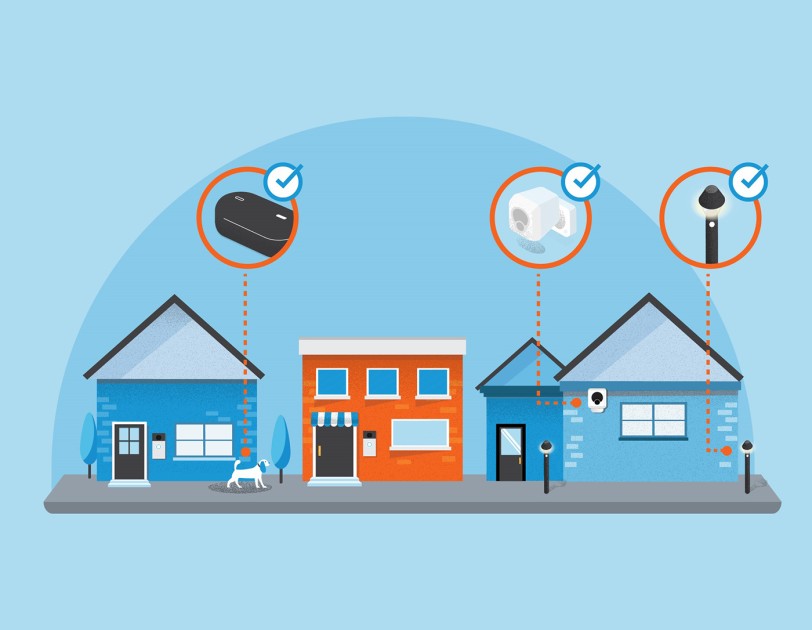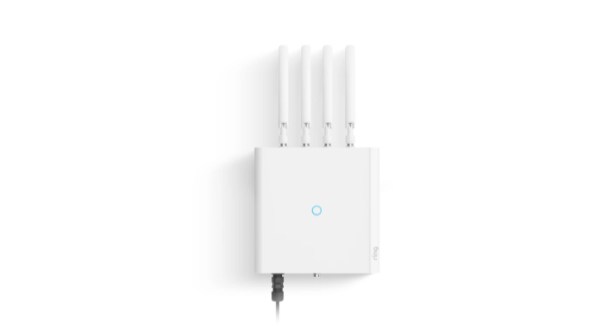
Photo: Amazon Sidewalk
Amazon wants to take its ‘neighbourhood network’ into smart cities
25 January 2022
by Sarah Wray
Amazon has announced pilot programmes to expand its Sidewalk mesh network into public spaces. Cities Today looks at the upshot for cities and their Internet of Things (IoT) plans.
Amazon is piloting a new device to expand the company’s Sidewalk network beyond residential areas to commercial centres, campuses, and parks to connect smart city sensors.
Sidewalk, which is only available in the US, enables select Echo and Ring devices to act as ‘bridges’ to create a shared network that provides wireless connections for small Internet of Things (IoT) devices such as smart speakers and pet trackers.
Amazon recently announced the Sidewalk Bridge Pro by Ring, a professional-grade bridge for businesses, municipalities, universities, and public services.
In a statement, Amazon said: “Since launching Amazon Sidewalk, Amazon has seen the network rapidly grow in residential areas nationwide, helping customers’ devices work harder inside homes, outside in the yard, and around the neighbourhood. But the benefits of Sidewalk can extend even further.
“This new device enables organisations to address problems created by limited connectivity.”
The Sidewalk Bridge Pro will provide connectivity to devices such as sunlight sensors, air quality monitors, and moisture sensors. The device is optimised for longer range and greater capacity, with the ability to simultaneously connect to hundreds of devices over five miles away. It also has a ruggedised housing to withstand outdoor conditions and comes with the option to add indoor or outdoor antennas.
An Amazon spokesperson told Cities Today: “We are not currently selling the device but are making it available through pilot programmes. Cities interested in piloting Sidewalk Bridge Pro should contact Amazon or Ring to participate in a pilot programme. We also encourage them to work with their solutions vendors to explore and develop Sidewalk-capable solutions that achieve their smart cities goals.”
They added that eventually: “We anticipate being able to support a wide variety of devices from a broad range of device-makers.”

Pilots
Two pilot programmes are already underway.
A proof-of-concept with Arizona State University’s University Technology Office (UTO) will explore how the Amazon Sidewalk Bridge Pro can connect on-campus sensors and deliver data to help improve campuses and cities.
UTO will install Amazon Sidewalk Bridge Pro devices on select blue light poles at the Tempe campus, which are primarily used as emergency call boxes for faculty and students.
Through the pilot, ASU intends to extend the range of connectivity for its on-campus IoT devices, while freeing up the university’s Wi-Fi for activities like remote learning, video conferencing, online research, or streaming.
“Exploring sustainable and long-term solutions plays a critical role in advancing our smart technology initiatives, both on campus and within the community,” said Bobby Gray, the University Technology Office’s director of Digital Transformation. “The university is unique in that it is a space that encourages new ideas and disruptive technologies to be developed, tested, and iterated upon quickly. Our goal is to deploy and test Amazon Sidewalk Bridge Pro to bring smart solutions, like those fitted to the blue light poles, to campus at scale and lower costs.”
Amazon is also kicking off a new proof-of-concept with Thingy, a company that makes air quality monitoring systems, to provide critical information about wildfires to first responders.
Impact for cities
Analysts’ views on whether the announcement is significant are mixed.
Grant Samms, a research analyst specialising in smart cities at Guidehouse Insights, said: “These types of low-power, wide-area mesh networks will be critical to the implementation of the IoT future that smart cities envision. To that end, Amazon’s Sidewalk is a notable project. An IoT meshnet provided by such a large consumer device-maker has the potential for both individuals and organisations like cities to place IoT devices precisely where they are needed for a task without needing to worry as much about connectivity needs.”
However, he added: “There are concerns with a system like this. Chiefly, while Amazon has made promises about the encrypted digital security of the Sidewalk meshnet, there remain potential security problems such as abusive use of the system.”
One example, noted by the Electronic Frontier Foundation, is the potential ability of one person to track another over the network by hiding a GPS tile among their possessions. Location device company Tile says a feature to prevent unauthorised tracking will be released soon.
In addition, Amazon Sidewalk is on an opt-out basis.
Samms said this raises a question of “how [Amazon] plans to better communicate to customers the access they are consenting to and allow those customers affirmative control over their Sidewalk participation.”
IoT and smart cities consultant Charles Reed Anderson is sceptical about Sidewalk’s relevance for cities, calling it “just another LPWAN offering”.
“The only real market opportunity for them in the near term is the US,” he said. “And I just don’t see it happening. It’s a ‘build it and they will come’ model, and those tend to fail.”
He added: “If I am a city, why would I go with this? I’d use LoRa so I could have my own encrypted network(s) and control my own data.”









